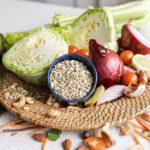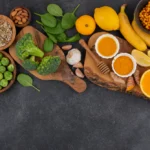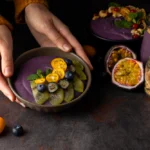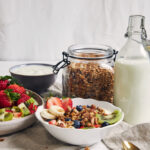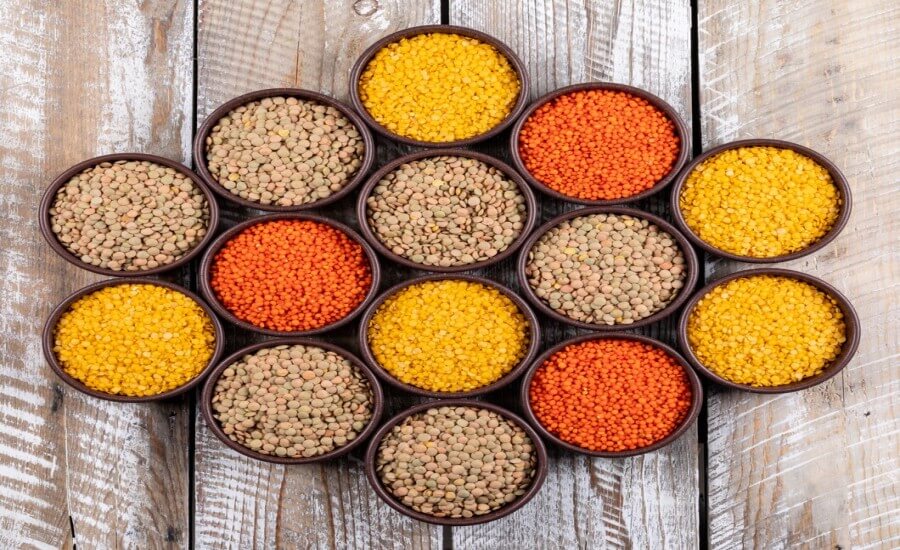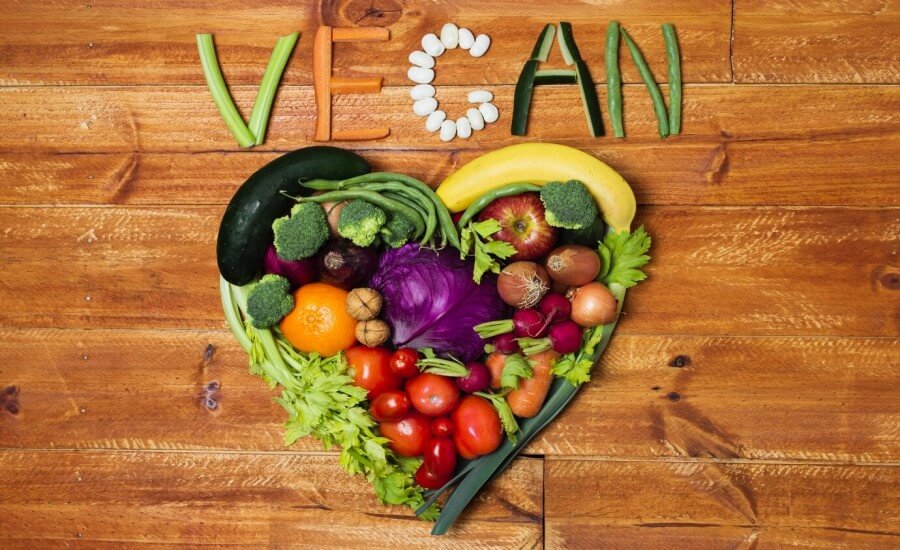Embarking on a Vegan Diet can be a transformative experience, offering a plethora of health benefits, ethical alignments, and environmental advantages. However, for individuals navigating food allergies, the landscape of dietary choices can often feel restrictive and challenging.
The good news is that a Vegan Diet for Allergies is not only possible but can also be incredibly diverse, delicious, and deeply nourishing. This comprehensive guide will explore how to successfully adopt a plant-based diet for allergies, focusing on identifying common allergens, discovering a wide array of safe and tasty alternatives, and equipping you with the knowledge to thrive on a restrictive yet fulfilling vegan journey.
Understanding the Intersection of Veganism and Allergies
A vegan diet, by definition, excludes all animal products dairy, and honey. While this inherently removes common allergens , it also means a greater reliance on plant-based ingredients, some of which can be significant allergens themselves. The key to a successful vegan allergy-friendly foods strategy lies in meticulous planning, label reading, and an adventurous spirit to explore new culinary horizons.
For someone with allergies, the initial thought of going vegan might seem daunting, adding another layer of restriction to an already limited diet. However, it can also be an empowering journey.
By systematically eliminating broad categories of food (animal products) and then meticulously managing specific plant-based allergens, individuals often discover a renewed sense of control over their health and well-being. The challenge transforms into an opportunity to explore a wider variety of fruits, vegetables, grains, legumes, and seeds that might have previously been overlooked.
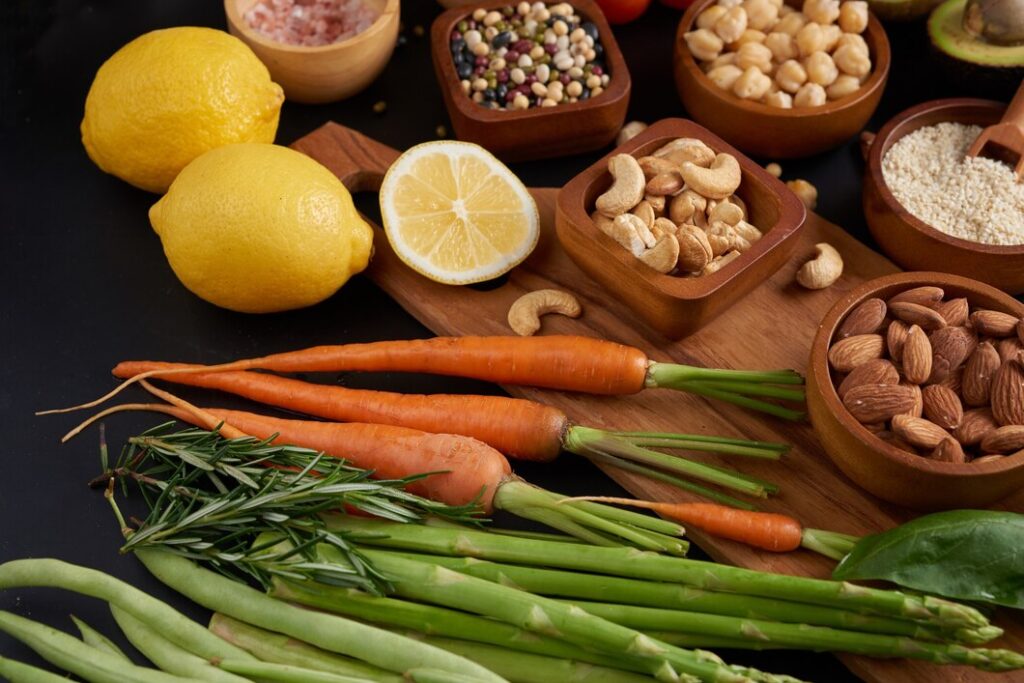
Common Food Allergens and Their Vegan Presence
Before diving into alternatives, it’s crucial to understand the “big eight” food allergens, which account for 90% of food allergies in the U.S., and how they intersect with a Vegan Diet:
- Milk: Naturally excluded from a vegan diet.
- Peanuts: A common plant-based allergen.
- Tree Nuts (almonds, cashews, walnuts, pecans, pistachios, Brazil nuts, hazelnuts, macadamia nuts): Very prevalent in vegan cuisine as milk, cheese, and butter alternatives.
- Soy: A cornerstone of many vegan diets (tofu, tempeh, edamame, soy milk).
- Wheat: Found in many bread, pasta, and processed vegan foods.
Beyond these, other common allergens that can impact a plant-based diet for allergies include:
- Sesame: Popular in tahini, hummus, and Asian cuisine.
- Corn: Present in many processed foods, corn syrup, cornstarch.
- Gluten (from wheat, barley, rye): A significant concern for those with Celiac disease or gluten sensitivity.
- Legumes (other than soy/peanuts): Lentils, chickpeas, beans, peas can cause reactions in some individuals.
- Coconut: Used in many vegan dairy alternatives.
- Mustard: Common in sauces and dressings.
This list highlights that while a vegan diet automatically avoids dairy it necessitates careful attention to plant-based allergens like nuts, soy, wheat, and gluten. The goal then becomes not just vegan, but allergy-specific vegan.
Building Your Allergy-Friendly Vegan Foundation: Core Food Groups
A successful Vegan Diet for Allergies starts with understanding your core, safe food groups. These are the pillars around which you will build your meals.
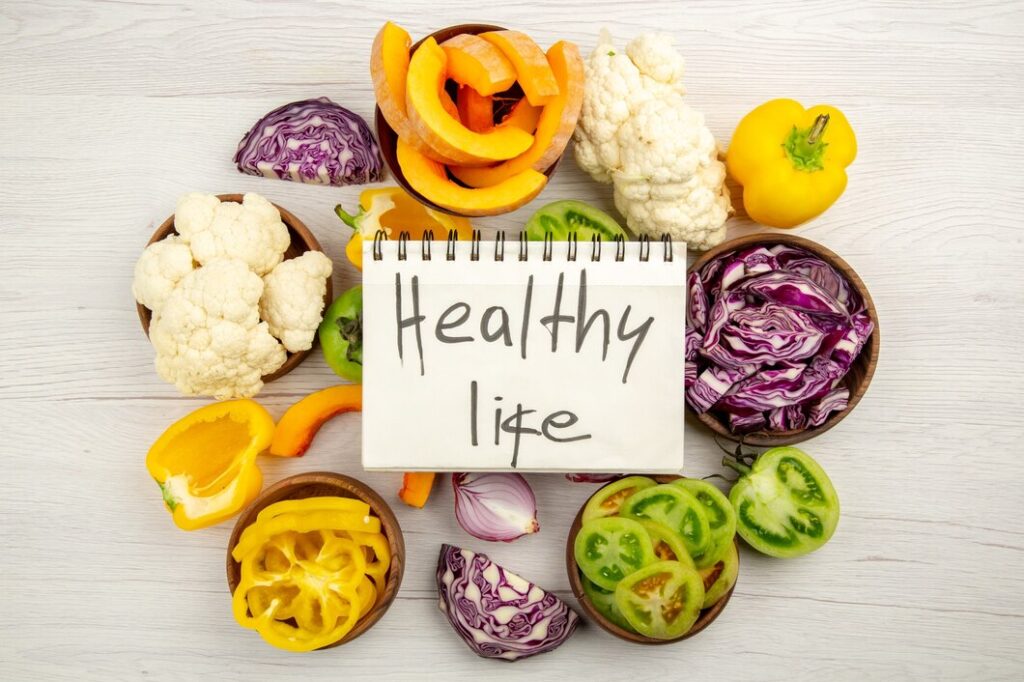
1. Fruits and Vegetables: The Unsung Heroes
These are universally safe for most individuals, forming the colorful and nutrient-dense foundation of any plant-based diet for allergies. They are naturally free of all major allergens (barring very rare individual sensitivities).
- Leafy Greens: Spinach, kale, collard greens, romaine, arugula.
- Cruciferous Vegetables: Broccoli, cauliflower, Brussels sprouts, cabbage.
- Root Vegetables: Carrots, potatoes, sweet potatoes, beets, parsnips.
- Berries: Strawberries, blueberries, raspberries, blackberries (packed with antioxidants).
- Citrus: Oranges, lemons, grapefruits (vitamin C powerhouses).
- Tropical Fruits: Bananas, mangoes, pineapples, papayas.
- Melons: Watermelon, cantaloupe, honeydew.
Tip: Focus on variety and seasonal produce to maximize nutrient intake and keep meals exciting.

2. Grains: Fueling Your Body
Grains are a crucial source of carbohydrates, fiber, and various micronutrients. For those with wheat/gluten allergies, this section requires particular attention.
- Gluten-Free Grains:
- Rice: Brown, white, wild, basmati, jasmine.
- Quinoa: A complete protein, excellent for those needing extra protein.
- Oats: (Certified gluten-free if you have celiac disease, as oats can be cross-contaminated with wheat during processing).
- Buckwheat: Despite its name, it’s not wheat and is gluten-free.
- Millet: A nutritious ancient grain.
- Sorghum: Great for baking and as a side dish.
- Corn: (If not allergic) Polenta, corn tortillas, cornmeal.
- Gluten-Containing Grains (Avoid if allergic to wheat/gluten):
- Wheat (bread, pasta, bulgur, couscous, seitan)
- Barley
- Rye
Tip: Always check labels for hidden gluten in processed foods, even those that seem naturally gluten-free.

3. Legumes: Plant-Based Protein Powerhouses
Legumes are vital for protein, fiber, and iron in a vegan diet. However, sensitivities to specific legumes can occur.
- Beans: Black beans, kidney beans, pinto beans, cannellini beans.
- Lentils: Red, green, brown, black.
- Chickpeas: Versatile for hummus (if sesame is okay), curries, roasted snacks.
- Peas: Green peas, split peas.
Important Note: If allergic to peanuts or soy, introduce other legumes cautiously and monitor for any reactions, as cross-reactivity can occur in some individuals.
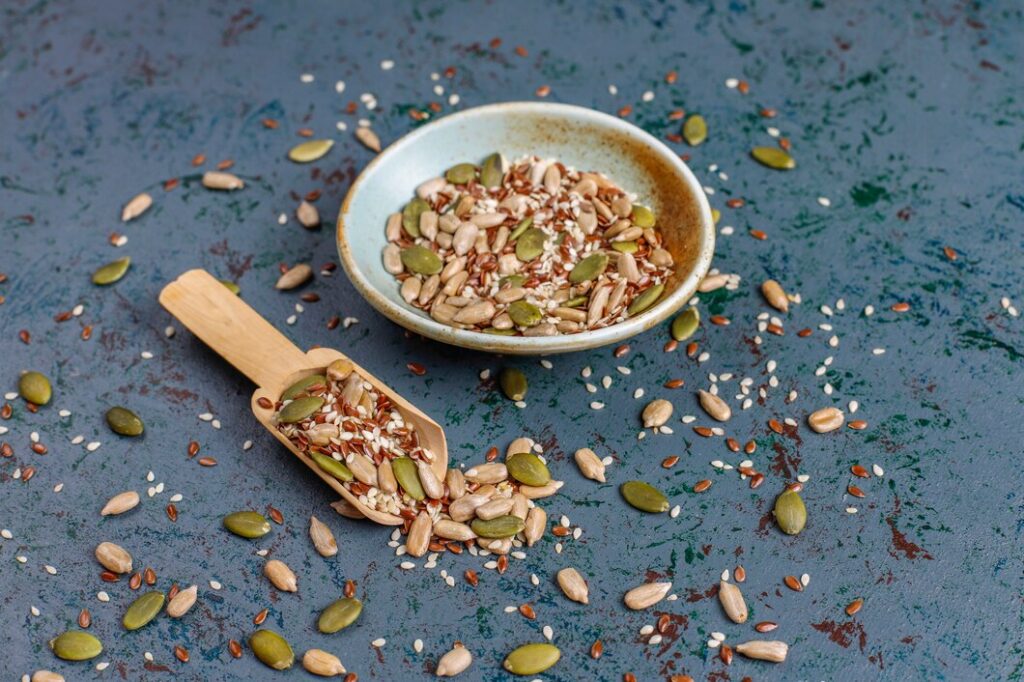
4. Seeds: Tiny Nutritional Dynamos
For those avoiding tree nuts and peanuts, seeds become an invaluable source of healthy fats, protein, and minerals.
- Chia Seeds: Excellent for thickening, puddings, omega-3s.
- Flax Seeds: Grind them for better absorption of omega-3s and fiber.
- Hemp Seeds: A complete protein, mild flavor, great sprinkled on anything.
- Pumpkin Seeds (Pepitas): Rich in zinc.
- Sunflower Seeds: Good source of Vitamin E.
- Watermelon Seeds: A lesser-known but nutritious option.
Caution: If you have a severe sesame allergy, some individuals might need to be careful with other seeds due to potential cross-contamination during processing, or very rarely, cross-reactivity. Always discuss with an allergist.
Mastering Allergy-Friendly Vegan Alternatives: Swapping Common Allergens
This is where the creativity truly shines in a plant-based diet for allergies. Many common vegan staples rely on soy or nuts. Here’s how to navigate those and other allergen substitutions.
1. Dairy-Free Alternatives (Beyond Nuts and Soy)
Many delicious dairy-free options exist, but often contain nuts or soy. Here are alternatives for a Vegan Diet for Allergies:
- Milk Alternatives:
- Rice Milk: Mild flavor, great for baking and cereals.
- Oat Milk: Creamy texture, excellent for coffee (ensure certified GF if needed).
- Hemp Milk: Nutty flavor, good protein content.
- Flax Milk: Thin consistency, omega-3s.
- Coconut Milk/Cream: Creamy, adds richness to curries and desserts (avoid if allergic to coconut).
- Potato Milk: A newer option, generally allergen-friendly.
- Yogurt Alternatives:
- Coconut Yogurt: Widely available (avoid if allergic to coconut).
- Oat Yogurt: Emerging on the market, look for certified GF.
- Fermented Rice Milk Yogurt: Some specialty brands exist.
- Cheese Alternatives: This can be trickier, as many vegan cheeses are nut- or soy-based.
- Homemade: Blended potatoes, carrots, nutritional yeast, and spices can create a cheesy sauce.
- Store-bought (read labels carefully): Some brands use coconut oil, starches, and flavors to create cheese-like products. Always double-check for hidden allergens.
- Butter Alternatives:
- Olive Oil/Coconut Oil: For cooking and baking (avoid coconut if allergic).
- Vegan Butters: Many brands use a blend of oils (e.g., canola, sunflower, palm). Ensure no soy or nut oils are used.

2. Peanut and Tree Nut-Free Alternatives
This is a critical area for many on a Vegan Diet for Allergies, as nuts are prevalent.
- Nut Butters:
- Sunflower Seed Butter (SunButter): Excellent alternative for peanut butter, widely available.
- Pumpkin Seed Butter: Earthy flavor, great for baking.
- Tahini (Sesame Seed Paste): If not allergic to sesame, this is a versatile, creamy base for dressings and sauces.
- Pesto: Traditional pesto uses pine nuts. Make a nut-free version with sunflower seeds, pumpkin seeds, or even a mix of leafy greens (like kale) and nutritional yeast.
- Baking: Replace nut flours with gluten-free grain flours (e.g., oat flour, rice flour, sorghum flour) or seed meals (e.g., ground sunflower seeds).
- Snacks: Roasted chickpeas, edamame (if not soy allergic), roasted seeds, fruit.

3. Soy-Free Alternatives
Soy is a major player in vegan cuisine. Navigating a soy-free Vegan Diet for Allergies means rethinking some staples.
- Tofu/Tempeh/Edamame Replacements:
- Legume-based Patties: Homemade patties from black beans, chickpeas, or lentils can be a great protein source.
- Seitan: If not allergic to wheat/gluten, seitan (wheat gluten) can replicate meaty textures.
- Mushroom-based: Portobello mushrooms, oyster mushrooms can offer a satisfying “umami” punch.
- Store-bought Meat Alternatives: Many are soy-based, but an increasing number are made from pea protein, wheat gluten (seitan), or mushroom bases. Always check labels meticulously.
- Soy Sauce Replacements:
- Tamari: (Often gluten-free, but still soy-based, so avoid if soy allergic).
- Coconut Aminos: An excellent soy-free, gluten-free alternative with a similar savory profile (avoid if coconut allergic).
- Bragg Liquid Aminos: (Soy-based, avoid if soy allergic).
- Soy Milk/Yogurt: Refer to the dairy-free alternatives above (rice, oat, hemp, flax, potato milk).
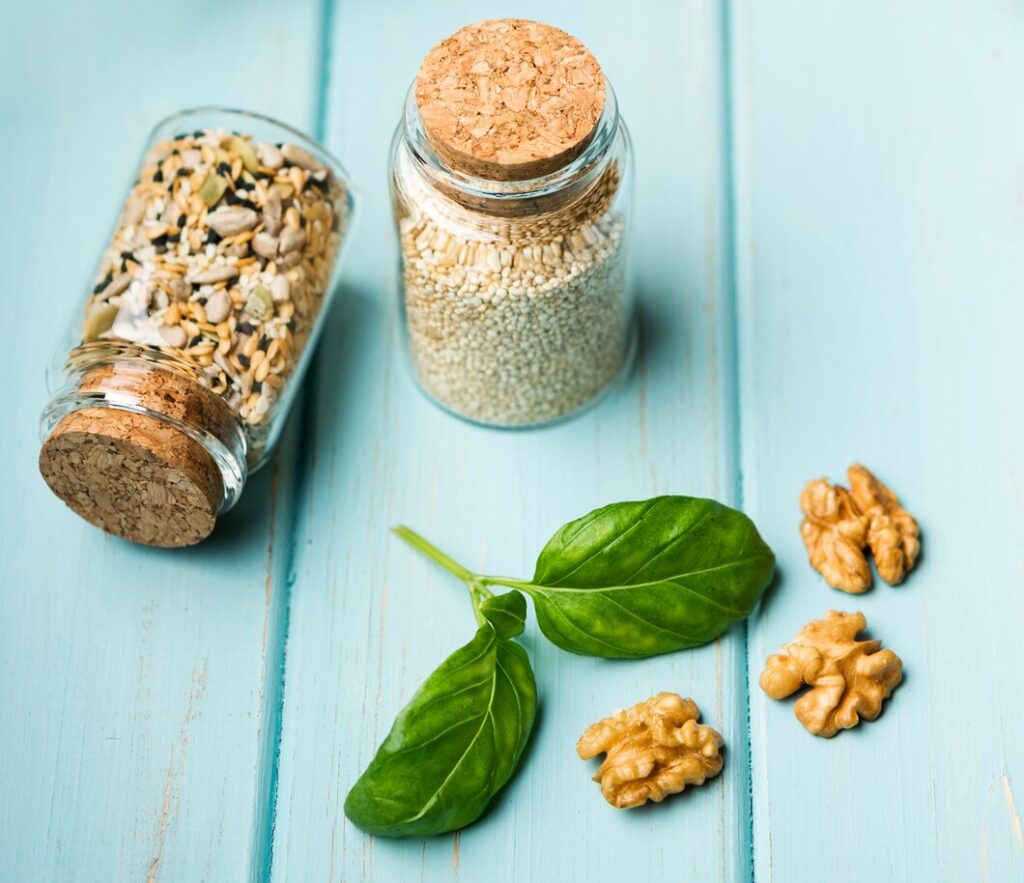
4. Wheat and Gluten-Free Alternatives
This is paramount for those with Celiac disease or gluten sensitivity.
- Bread/Pasta: Use certified gluten-free versions made from rice, corn, quinoa, buckwheat, or lentil flours.
- Thickeners: Cornstarch (if not allergic), arrowroot powder, tapioca starch, gluten-free flour blends.
- Baked Goods: Use gluten-free flour blends, or experiment with individual gluten-free flours like rice flour, oat flour, almond flour (if nuts are okay), or coconut flour (if coconut is okay).
- Seitan: (Avoid as it is wheat gluten).

5. Sesame-Free Alternatives
- Tahini Replacements: Sunflower seed butter, pumpkin seed butter, or a blend of safe seeds.
- Hummus: Make your own with chickpeas and sunflower seed butter instead of tahini.
- Asian Cuisine: Be mindful of sesame oil in stir-fries and dressings. Use olive oil or another safe oil, and coconut aminos for flavor.
Navigating Processed Foods and Eating Out
This is often the trickiest part of a Vegan Diet for Allergies.
Label Reading: Your Superpower
- “May Contain” Statements: These indicate potential cross-contamination. For severe allergies, these foods should be avoided.
- Ingredient Lists: Scrutinize every ingredient. Allergens can hide in unexpected places (e.g., soy lecithin in chocolate, wheat in spices, nuts in “natural flavors”).
- Certifications: Look for “Certified Gluten-Free,” “Nut-Free Facility,” or “Soy-Free” labels, but still double-check the ingredient list.
- Contact Manufacturers: If unsure about an ingredient or cross-contamination risk, contact the company directly.
Eating Out: Preparation is Key
- Research Ahead: Look up restaurant menus online.
- Call Ahead: Speak to the manager or chef before arriving to discuss your allergies and vegan needs.
- Communicate Clearly: When ordering, explicitly state “vegan and allergy-free from X, Y, Z.” Be specific about ingredients (e.g., “no nuts, no soy sauce, no butter”).
- Choose Simpler Dishes: Opt for meals where ingredients can be easily controlled, like plain roasted vegetables, salads with oil and vinegar, or rice-based dishes.
- Be Prepared: Carry safe snacks with you in case options are limited.
Ensuring Nutritional Adequacy on a Restrictive Vegan Diet
The more allergens you avoid, the more important it becomes to ensure you’re getting all essential nutrients. A Vegan Diet for Allergies requires careful planning.
Key Nutrients to Monitor:
- Protein: Combine different protein sources throughout the day (legumes, grains, seeds, safe vegetables). If soy and nuts are out, focus on a variety of beans, lentils, quinoa, certified GF oats, hemp seeds, and pumpkin seeds.
- Vitamin B12: This is non-negotiable for all vegans. Supplementation is essential, as B12 is not reliably found in plant foods.
- Iron: Include iron-rich plant foods (dark leafy greens, lentils, beans, fortified cereals). Enhance absorption by consuming with Vitamin C.
- Calcium: Fortified plant milks (rice, oat, hemp), calcium-set tofu (if soy is okay), dark leafy greens (kale, collard greens), broccoli, fortified cereals.
- Vitamin D: Fortified plant milks, UV-exposed mushrooms, and often requires supplementation, especially in northern climates.
- Omega-3 Fatty Acids: Flax seeds, chia seeds, hemp seeds, walnuts (if nuts are okay). Consider an algal oil supplement for EPA/DHA.
- Iodine: Found in iodized salt, limited amounts of seaweed, and certain fortified food products.
- Zinc: Pumpkin seeds, hemp seeds, lentils, beans, oats.
Consider Working with a Professional:
For individuals with multiple or severe allergies on a vegan diet, consulting with a registered dietitian (RD) who specializes in plant-based nutrition and allergies is highly recommended. They can help create a personalized meal plan, identify potential nutrient gaps, and recommend appropriate supplements.
Tips for Success: Thriving on Your Allergy-Friendly Vegan Journey
- Educate Yourself: Learn about your specific allergens and their hidden names on labels.
- Cook at Home: This gives you full control over ingredients and minimizes cross-contamination risks.
- Experiment with New Foods: Don’t be afraid to try grains, vegetables, and seeds you haven’t eaten before. This expands your repertoire.
- Embrace Whole Foods: Focus on unprocessed fruits, vegetables, legumes, and grains. They are naturally less likely to contain hidden allergens.
- Batch Cooking: Prepare large quantities of safe staples (cooked grains, roasted vegetables, bean dishes) to simplify meal prep throughout the week.
- Find Allergy-Friendly Vegan Recipes: Online communities and blogs dedicated to specific allergen-free vegan diets can be invaluable resources.
- Stay Positive: It can be frustrating at times, but remember the health benefits and the delicious world of food you can enjoy.
Conclusion
Adopting a Vegan Diet for Allergies is a journey that requires diligence, creativity, and self-awareness. While it presents its unique set of challenges, it also opens up a vibrant world of vegan allergy-friendly foods that are both safe and incredibly tasty.
By understanding your allergens, focusing on core plant-based food groups, mastering strategic substitutions, and prioritizing nutritional adequacy, you can successfully embrace a plant-based diet for allergies that supports your health, satisfies your palate, and aligns with your values. Remember, your diet is a powerful tool for well-being; with careful planning, it can be both a sanctuary from allergens and a source of profound nourishment.

